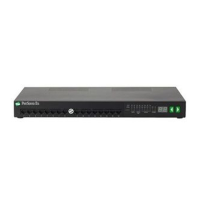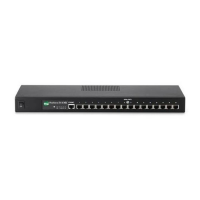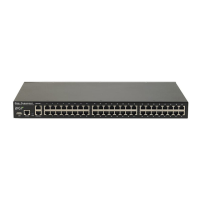90030500B Basic Configuration Page 75
Configuring a user for manual or automatic login
and connection to a host
The procedures given below are typical methods of configuring a user’s connections
to a host. The first procedure configures a user who must log in for each session with
their own login and password. The second procedure configures a user who will auto-
matically be connected to another machine. The third procedure describes how to pro-
vide the user with a menu of connection options each time they log in.
Configuring a user for manual login
1. If you have not already done so, create a new “regular” user by entering the fol-
lowing command:
set user name=<username> [options]
A “regular” user is any user other than
root
. The options specify whether the
user is required to enter a password and whether successful login results in auto-
matic connection to another machine. For example, to create a regular user called
Linda
, enter:
#>set user name=Linda
For detailed information, refer to
set user
in the
Command Reference
Guide
.
The user names are stored in a table of users that you can view by typing
set
user
without any other parameters.
Note:
User names are case sensitive;
Linda
is not the same user as
linda
or
LINDA
.
Important:
For new users, the user’s password is the same as the user name, with
the same capitalization. In the example, Linda’s initial default pass-
word is the same as her username,
Linda
. The password can be
changed as described in Step 3.
2. By default, a user must enter their password each time he or she logs in. We sug-
gest you check that the option is set correctly by specifically entering the com-
mand described below. Alternatively, if security is not a concern, you may want to
remove the requirement for a password.
set user name=username passwd=[on][off]
For example, to ensure Linda enters a password each time she logs in, enter:
#>set user name=Linda passwd=on

